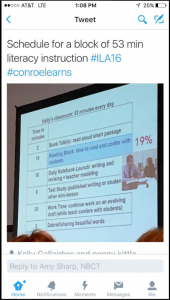
Ah, on my to-do list: an updated syllabus for the Computer Technology Essentials course. I put one together this summer with the foresight that it would need to be modified. As with all things new, what we expect doesn’t always materialize, and what we get is sometimes far greater than we hoped.
The current unit of study is “Documents.” I had hoped to get all the students into Google apps, but alas, because of the age restrictions I’m taking a step back and asking parents to sign their children up with accounts since many of them aren’t 13 yet. I know the method of adding them in edublogs with the +name method, but that’s not enough, and time-consuming for a single semester course.
This week we focused on mind mapping/story mapping. Of all the software and apps I looked at, everything requires potential money, were too dry, boring, and tediously requiring logins. I have login fatigue: only imagine what this generation will feel. They’ll welcome the biometrics with open arms and eyeballs, surrendering more data to the Borg.
My district, thankfully, is in the process of obtaining new software, but we can’t wait for POs and checks. I did what any smart teacher would: went low-tech. Paper, pencils, colored pencils, highlighters. And modeling.
The criteria:
- The map had to be for a class: math, science, language arts, social studies, pe/health
- character sketches
- story maps
- scientific process
- claim, evidence and reasoning charts
- claim, evidence, and reasoning questions
- math processes and equations
- It would have a central idea/topic/question and a minimum of nine other connections
- Choose something that’s currently challenging or difficult to help make sense of it OR
- Choose something that’s currently interesting/easy to show what you know
I asked the teachers in the building what they were working on this week, and received so much support. The students loved that I helped them make connections to CTE and their other classes. (Not to mention the mad teacher ninja skills we possess.)
After they spent a class sketching on rough paper, they drew a more finished copy on blank paper (it was tough to give up my own paper supply, but worth it). The next day I walked them through Word features: shapes, inserting Youtube videos, pictures, online pictures, etc. to recreate their sketches digitally. With writing, the process is key on the path to publication.
Some examples:
[embeddoc url=”https://blog0rama.edublogs.org/files/2017/10/PEMDAS-2jxc340-1hh4692.pdf” download=”all” viewer=”google” ]
There may be hundreds of apps and software companies trying to get a piece of the ed-tech dollars. I would ask that perhaps you talk to teachers in the classroom about the hurdles we help our students jump over to use your products. Ask yourselves the same questions my students ask: What is the point of this product? Is it helping me or getting in my way?
I’m not sure how to phrase that on a syllabus, those nuances and subtleties of creating.
[embeddoc url=”https://blog0rama.edublogs.org/files/2017/10/CER-FRAME-2blcmch-1c2h9t7.docx” download=”all” viewer=”microsoft” ]
Never be afraid to slow it down, stop, look up, and then move forward.




